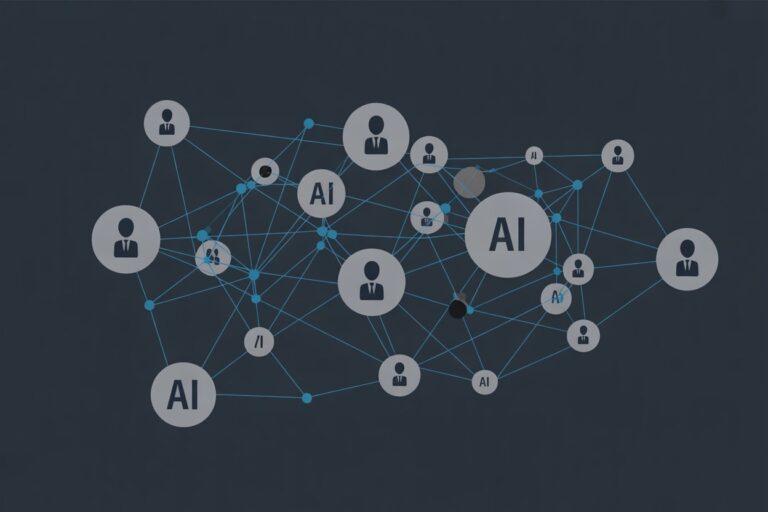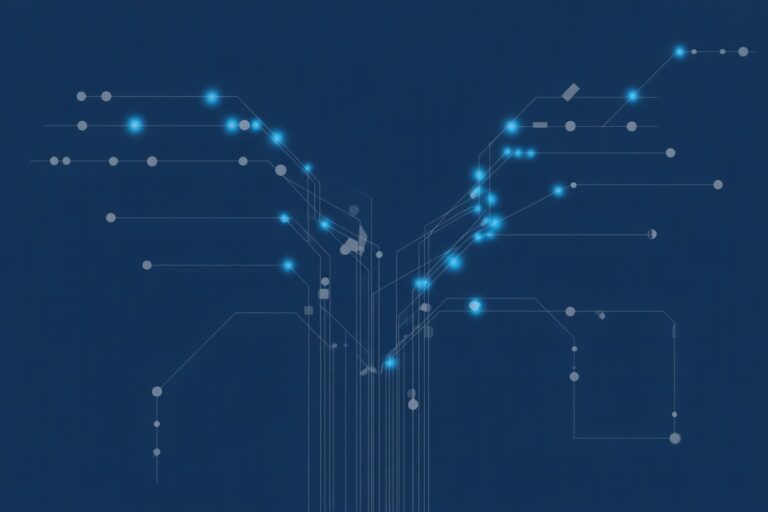Predictive Analytics in Litigation: When Algorithms Calculate Your Odds of Winning
In litigation, uncertainty has always been both weapon and wager. Now, predictive analytics promise to remove it. Machine learning tools can estimate who wins, who settles, and even which judge writes shorter opinions. The question, once philosophical, has turned practical: at what point does foresight turn into foregone conclusion?
From Gut Instinct to Statistical Certainty
For decades, lawyers relied on experience, precedent, and the ineffable “feel” of a case. Today, predictive models transform that intuition into probability. Platforms such as Lex Machina, Blue J, and Premonition use docket analytics and natural-language processing to forecast outcomes based on thousands of prior filings. They promise data-driven strategy, identifying which arguments persuade which judges, which plaintiffs win, and when a settlement offer beats a verdict.
Insurers and litigation funders already rely on these tools to model exposure. In corporate defense circles, the question is no longer whether a claim has merit, but whether the predicted loss rate justifies fighting. Algorithms have turned litigation into actuarial science, and the adversarial process into risk optimization.
The Predictive Justice Paradox: How AI Shapes Legal Decision-Making
Prediction creates its own feedback loop. When parties act on model outputs, choosing to settle, delay, or avoid filing altogether, the underlying data shifts. As more cases conform to prediction, the model’s “accuracy” improves by self-confirmation, not by truth. Scholars call this the predictive justice paradox: the more persuasive the algorithm becomes, the less it reflects real choice.
In practical terms, this alters the meaning of advocacy. A lawyer advising settlement based on an AI forecast might protect a client’s finances while eroding their agency. If no one challenges probabilistic consensus, precedent stagnates. Justice becomes a closed system trained on its own caution.
This phenomenon also creates a dangerous divide. Well-funded parties can afford sophisticated predictive tools and teams of analysts to interpret judge patterns and historical outcomes. Individual litigants and small firms cannot. The result is an access-to-justice crisis where prediction becomes a privilege rather than a safeguard, widening the gap between those who can afford algorithmic advantage and those who cannot.
From Strategic Tools to Shadow Judges
American Bar Association Formal Opinion 512 (July 2024) directs lawyers to understand the capabilities and limits of AI tools, emphasizing competence, confidentiality, and human verification. That guidance presumes the lawyer remains the decision-maker. Yet predictive systems increasingly blur that line. When a platform tells counsel there is a high probability of losing summary judgment before a particular judge, declining to follow that advice looks less like discretion and more like negligence.
The tension mirrors medical AI, where diagnostic models outperform physicians statistically but not contextually. Law’s equivalent risk is over-trust: mistaking predictive strength for normative authority. Algorithms may describe what judges did, not what they ought to do next. Without interpretive judgment, prediction flattens persuasion into probability.
Data, Bias, and the Appearance of Objectivity in AI Litigation Analytics
Outcome prediction depends on historical data – records shaped by unequal access, plea bargains, and structural bias. A 2024 review by the National Center for State Courts warned that models trained on prior sentencing and civil dispositions risk replicating disparities across race, geography, and representation. Statistical neutrality can disguise inherited prejudice.
Developers counter with fairness audits and de-biasing protocols, often aligned with the NIST AI Risk Management Framework. Still, no dataset captures the nuance of a juror’s empathy or a judge’s fatigue. Machine learning parses words, not conscience. In law, that gap is not technical but constitutional.
When Algorithms Advise the Bench: Judicial Use of Predictive AI
Courts themselves are beginning to experiment. In June 2025, the Council on Criminal Justice launched a national task force to develop standards and evidence-based recommendations for the integration and oversight of artificial intelligence in the criminal justice system. Chaired by former Texas Supreme Court Chief Justice Nathan Hecht, the task force examines how AI could improve caseflow management and resource allocation while warning against allowing automation to become the sole basis for decisions affecting liberty and due process.
The Judiciary of England and Wales permits AI to summarize filings but forbids unverified reliance. Guidance first issued in December 2023 and refreshed in April 2025 emphasizes that judges remain personally responsible for all content produced under their authority and must independently verify any AI-generated research or analysis.
Canada’s approach reflects similar caution. The Canadian Judicial Council issued comprehensive guidelines in October 2024 stating unequivocally that judges must never delegate decision-making authority to AI systems. The guidelines acknowledge AI’s potential to assist with translation, summarization, and administrative tasks, while stressing that automation must “enhance, not replace, human reasoning.”
Globally, predictive analytics are spreading faster than regulation. Singapore’s courts now use generative AI to draft procedural summaries. France’s Predictice platform offers statistical insights into judicial reasoning but operates under a 2019 law banning publication of judge-specific win rates to protect judicial independence. The trend line is clear: governments embrace prediction while trying not to automate judgment itself.
Ethics at the Edge of Automation
The professional duties most threatened by predictive tools are independence and zeal. Model Rule 2.1 requires lawyers to exercise independent judgment, not outsource it to analytics. Rule 1.2 preserves client autonomy in deciding whether to settle or proceed. If statistical advice becomes determinative, both duties erode. The algorithm becomes the de facto counselor.
Judges face similar constraints. In the United States, due process guarantees reviewable reasoning. An algorithm that influences outcomes without disclosure could violate a litigant’s right to know why they lost. The Organisation for Economic Co-operation and Development cautioned in its September 2025 report Governing with Artificial Intelligence that predictive justice tools must remain “subject to explicit human control” to preserve procedural fairness.
Global Lessons on Predictive Law: Comparative Regulation of Legal AI
The European Union’s AI Act classifies systems used for judicial prediction as “high-risk,” demanding transparency, explainability, and human oversight. Canada’s Directive on Automated Decision-Making mandates algorithmic impact assessments for any model affecting legal rights. Brazil’s judiciary has experimented with generative research assistants but maintains human signature on all rulings. Singapore’s model echoes this balance: efficiency through AI, legitimacy through humans.
The convergence suggests a global ethic: prediction may inform justice, but never dictate it. Legal systems tolerate automation only when accountability remains traceable to a person with moral and professional standing. The rest is administration by spreadsheet.
Why Lawyers Still Matter
Law has always been probabilistic. Every litigator knows the calculus of venue, temperament, and timing. What AI adds is scale and speed. What it removes is mystery. A trial once symbolized the courage to risk uncertainty before peers; now it risks looking irrational in the face of statistical certainty. Yet without that risk, law loses its moral theater. Justice requires room for persuasion, and for error redeemed through reasoning, not regression curves.
The future courtroom will likely feature AI co-counsel drafting motions and predicting appeal odds. But the decision to fight, to concede, or to test a principle will remain human precisely because it is irrational. Probability can advise; only people can believe.
Sources
- American Bar Association: ABA Formal Opinion 512 on Generative Artificial Intelligence Tools (PDF) (July 29, 2024)
- American Bar Association: Model Rule 1.2 – Scope of Representation and Allocation of Authority Between Client and Lawyer
- American Bar Association: Model Rule 2.1 – Advisor
- Artificial Lawyer: France Bans Judge Analytics, 5 Years In Prison For Rule Breakers (June 4, 2019)
- Blue J Legal – AI-Powered Tax and Employment Law Platform
- Canadian Judicial Council: Guidelines for the Use of Artificial Intelligence in Canadian Courts (October 24, 2024)
- Council on Criminal Justice: Task Force on Artificial Intelligence (Launched June 16, 2025)
- European Union: Artificial Intelligence Act (2024)
- Lex Machina – Legal Analytics Platform
- National Center for State Courts: Guidance on Implementing AI in Courts (Updated May 27, 2025)
- National Institute of Standards and Technology: AI Risk Management Framework (2023)
- New York Times: Here’s What Happens When Your Lawyer Uses ChatGPT (May 27, 2023)
- Organisation for Economic Co-operation and Development: AI in Justice Administration and Access to Justice – Governing with Artificial Intelligence (September 2025)
- Organisation for Economic Co-operation and Development: Governing with Artificial Intelligence – The State of Play and Way Forward in Core Government Functions (September 2025)
- Premonition – Litigation Analytics Platform
- Treasury Board of Canada Secretariat: Directive on Automated Decision-Making (Updated 2025)
- United Kingdom Courts and Tribunals Judiciary: Artificial Intelligence (AI) Judicial Guidance (December 2023, Refreshed April 2025)
This article was prepared for educational and informational purposes only. It does not constitute legal advice and should not be relied upon as such. All cases, statutes, and sources cited are publicly available through court filings, government publications, and reputable legal outlets. Readers should consult professional counsel for specific legal or compliance questions related to AI use in the justice system.
See also: Algorithmic Sentencing Gains Ground in Criminal Courts







